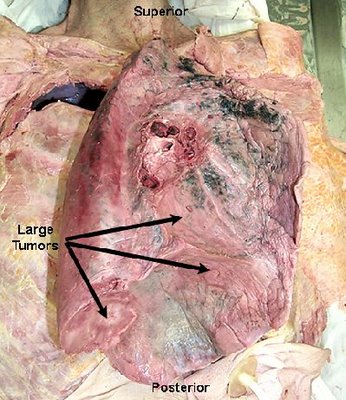Pesticides are all used to eradicate pests, which included the following :
- Insecticides : Especially for insects
- Rodenticides : To eradicate rats
- Herbicide : To eradicate the nuisance plants.
Two kinds of insektisidayang most widely used :
- Hydrochloric hydrocarbon
- Organic phosphate insecticide
Organic Phosphate Insecticide properties
Insecticides kholin esterase inhibitor is the most potent insecticides used in agriculture with high toxicity. Can penetrate normal skin, can be absorbed through the lungs and esophagus, not accumulate in body tissues.
Diagnosis
Clinic
The most prominent is the salivary glands hyperactivity / tears / sweat / urinary / digestive tract of food (abbreviated as SLUD = Salivasi, Lakrimasi, urination and diarrhea), difficulty breathing abnormalities and visual acuity.
- Mild poisoning
- Anoriksia
- headaches
- feeling weak
- Fear
- tongue tremor
- tremor eyelid
- Pupil miosis
- Moderate Poisoning
- Nausea, Vomiting, vomiting - Seizures / abdominal cramps, Hipersalivasi, hyperhidrosis, muscle fasciculation, Bradikardi
- Severe poisoning
- Diarrhoea, Pupil "pin-point", the light reaction (-), Shortness of breath, Sianosos, Pulmonary Edema, Inkonteinensia urine, feces Inkotinensia, convulsions, Coma, Blockade of heart, Finally died
Nursing Assessment
- Vital signs
- Respiratory Distress
- Cyanosis
- Takipnoe
- Neurology
Organic Phosphate Insecticide causes higher levels of CNS toxicity, its effects include lethargy, sensitive to stimulation, dizziness, stupor and coma. - GI Tract
Mouth irritation, burning sensation in the mouth and esophagus mucous membranes, nausea and vomiting. - Cardiovascular
Dysrhythmias. - Dermal
Skin irritation - Ocular
Kurnea burns - Laboratory
- Red blood cells were decreased
- Proteinuria
- Haematuria
- Hipoplasi bone marrow
Nursing Diagnosis
High risk of lack of fluid volume associated with loss of body fluids is abnormally
Objective: There was no shortage of liquid
Evaluation criteria:
Adequate fluid balance
- Vital signs stable
- Stable skin turgor
- Mucous membranes moist
- Expenditure normal urine 1-2 cc / kg body weight / hour
Nursing Intervention :
- Monitor income and expenditure of fluid.
Rational: Accurate documentation can assist in identifying spending and replacement fluids. - Monitor the temperature of the skin, palpation of peripheral pulses.
Rational: cold and moist skin, weak pulse may indicate impairment of peripheral circulation and the need for additional fluid replacement. - Note the presence of nausea, vomiting, bleeding
Rational: Nausea, vomiting and excessive bleeding can refer to hipordemia. - Monitor vital signs
Rational: hypotension, tachycardia, increased respiration indicates the lack of fluid (dehydration / hypovolaemia). - Give fluids parinteral in collaboration with his medical team.
Rational: The liquid parenteral fluid volume required to support / prevent hypotension. - Collaboration in the provision antiemetik
Rational: Antiemetik can eliminate the nausea / vomiting which can cause imbalance of income. - Give oral re-entry gradually.
Rational: Inclusion of peroral dependent upon the return of gastrointestinal function. - Monitor laboratory studies (Hb, Ht).
Rational: As an indicator / kehilanan volume with fluid circulation.















No comments:
Post a Comment